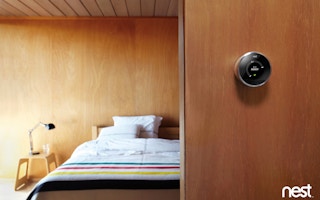Energy efficiency, at times referred to as the “fifth fuel,” can cut carbon emissions without the cost of adding new generating capacity or putting additional strain on the electrical grid. As more companies and individuals worldwide recognize the need to mitigate climate change-related risks, the development of technology to address and improve industrial and consumer energy use has flourished.
To continue reading, subscribe to Eco‑Business.
There's something for everyone. We offer a range of subscription plans.
- Access our stories and receive our Insights Weekly newsletter with the free EB Member plan.
- Unlock unlimited access to our content and archive with EB Circle.
- Publish your content with EB Premium.
A part of the growing “Internet of Things” ecosystem, smart thermostats are devices which give users the ability to both see and control power and fuel use. Installations of these devices are gaining in popularity, proving their ability to reduce heating and cooling costs while cutting down on energy consumption overall.
Analyzing and informing in real-time
In simple terms, “smart” or Wifi-connected thermostats are small computers that are able to “learn” how to predict and respond to behavior. After installing the unit, users adjust the temperature through the control panel or smart device. At this point, the smart thermostat isn’t much different from its analog counterparts.
However, the computer system has a complex circuit board within its housing. Microchips save and quantify the thermostat’s adjustments, store these temperature modifications, and analyze the patterns. Because the device is connected to the Internet, it can also relay this data elsewhere, sending information back to energy utilities to analyze peak energy costs within the area.
By interacting with a larger, connected network, smart thermostats operate within the context of the entire neighborhood, coordinating and collaborating with other cities, towns, and municipal areas.
Energy, personalized
As smart thermostats learn your behaviors, they also calculate the best time to activate. A user’s peak costs might range between noon and 5p.m. In response, the thermostat will activate the cool air at about 11a.m. It then shuts off at noon so that anyone in the building or home can enjoy a cool space without paying the most expensive rate.
By “optimizing performance” the thermostat functions as an efficient, informed machine. By knowing when to activate and at what temperatures, smart thermostats do the thinking for you to save resources that would otherwise be wasted. When implemented alongside other smart home devices, the thermostat helps work to create a highly-personalized picture of one’s entire home or office space.
Remote sensors connected wirelessly within a building can detect and analyze motion as the system adjusts the temperature based on this data. As a result, users only pay to heat or cool the areas of the building that are occupied.
Using voice control, it’s also possible to speak to a smart thermostat vis-à-vis a digital assistant (like Siri, or Amazon’s Alexa) instead of punching buttons manually. Self-learning devices – such as the smart thermostat – are heralding a new era of artificial intelligence in the home.
The Nest thermostat, Apple’s HomeKit, and most recently, Google’s Home, are among the first generation of technologies designed to collect and use behavioral data to “know” users personally.
Increasingly sophisticated machine learning algorithms are making it possible for users to speak to their homes using natural language (“Siri, tell the thermostat I’m too cold.”), which allows the system to “understand” one’s personality and preferences in such a way that the residence or building remains secure and efficient even in its users absence.
“
In order to become more truly widespread, the home automation industry as a whole will have to learn how to apply its intelligence in such a way that it fulfills a more necessary niche in consumer’s lives.
Innovation limitations
Though the market for IoT devices like smart thermostats is typically perceived as being consumer-driven, it can be difficult for the average home or business owner to perceive the immediate benefits of investing in such high-cost technology.
Smart thermostats, cameras, and door locks have succeeded in appealing to early adopters within a relatively limited demographic to help solve certain specific issues, but a fragmentation of the smart home market has prevented many of these tools from working well together – keeping the consumer from a truly comprehensive product experience.
Because “smart” thermostats derive their intelligence from an Internet connection, privacy and security issues need to be properly addressed to guide implementation forward. As more smart appliances and systems are integrated into the home, more devices (with oftentimes insufficient security standards) are able to send sensitive personal information across wireless networks.
What smart thermostats and other automated, Internet-enabled building controls and software know about one’s lifestyle habits and movements can be accessed not only by their users and manufacturers, but by fraudulent hackers and any entity capable of navigating around weak encryption protocols.
As such, the energy and cost-saving benefits of these tools remains balanced with concerns surrounding rights to personal privacy and data security.
In order to become more truly widespread, the home automation industry as a whole will have to learn how to apply its intelligence in such a way that it fulfills a more necessary niche in consumer’s lives.
Once the Internet of Things reaches such a milestone, the convenient, energy-saving potential of smart, connected tools will (hopefully) drive technology companies as well as consumers to push for a more flexible and resilient security posture.
Emma Bailey is a writer in the greater Chicago area who covers technology, entertainment, and business. This article was written exclusively for Eco-Business.











